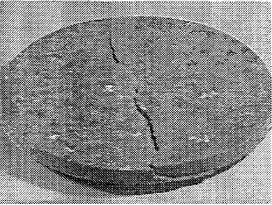Recently, I met Josh Hopkins of Lockheed’s Advanced Programs, AIAA Rocky Mountain Region’s First Annual Technical Symposium (RMATS), October 26, 2012. Josh was the keynote speaker at this RMATS. Here is his presentation. After his presentation we talked outside the conference hall. I told him about my book, and was surprised when he said that two groups had failed to reproduce Podkletnov’s work. I knew one group had but a second? As we parted we said we’d keep in touch. But you know how life is, it has the habit of getting in the way of exciting research, and we lost touch.
About two weeks ago, I remembered, that Josh had said that he would provide some information on the second group that had failed to reproduce Podkletnov’s work. I sent him an email, and was very pleased to hear back from him and that the group’s finding had been published under the title “Gravity Modification by High-Temperature Semiconductors”. The authors were C. Woods, S. Cooke, J. Helme & C. Caldwell. Their paper was published in the 37th AIAA/ASME/SAE/ASEE Joint Propulsion Conference and Exhibit, 8–11 July 2001, Salt Lake City, Utah. I bought a copy for the AIAA archives, and read it, reread it, and reread it.
Then I found a third team they published their lack of findings “Gravity Modification Experiments Using a Rotating Superconducting Disk and Radio Frequency Fields”. The authors were G. Hathaway, B. Cleveland and Y. Bao. Published in Physica C, 2003.
Both papers focused on attempting to build a correct superconducting disc. At least Wood et al said “the tests have not fulfilled the specified conditions for a gravity effect”. The single most difficult thing to do was to build a bilayered superconducting disc. Woods et al tried very hard to do so. Reading through Hathaway et all paper suggest that they too had similar difficulties. Photo shows a sample disc from Woods’ team. Observe the crack in the middle.
Further, Woods’ team was able to rotate their disc to 5,000 rpm. Hathaway’s team reports a rotational speed of between 400–800 rpm, a far cry from Podkletnov’s 5,000 rpm. This suggests that there were other problems in Hathaway’s disc not reported in their paper. With 400–800 rpm, if Hathaway were to observe a significant weight change it would have been less than the repeatable experimental sensitivity of 0.5mg!
Here are some quotes from Hathaway et al’s original paper “As a result of these tests it was decided that either the coil designs were inefficient at producing …”, “the rapid induction heating at room temperature cracked the non-superconducting disk into two pieces within 3 s”, “Further tests are needed to determine the proper test set-up required to detect the reverse Josephson junction effect in multi-grain bulk YBCO superconductors”.
It is quite obvious from reading both papers that neither team were able to faithfully reproduce Podkletnov’s work, and it is no wonder that at least Woods et al team stated “the tests have not fulfilled the specified conditions for a gravity effect”. This statement definitely applies to Hathaway et al’s research. There is more to critic both investigations, but .… this should be enough.
Now, for the final surprise. The first team I had mentioned earlier. Ning Li led the first team comprised of members from NASA and University of Huntsville, AL. It was revealed in conversations with a former team member that Ning Li’s team was disbanded before they could build the superconducting discs required to investigate Podkletnov’s claims. Wow!
If you think about it, all these “investigations” just showed that nobody in the US was capable of faithfully reproducing Podkletnov’s experiments to even disprove it.
What a big surprise! A null result is not a disproof.
—————————————————————————————————
Benjamin T Solomon is the author & principal investigator of the 12-year study into the theoretical & technological feasibility of gravitation modification, titled An Introduction to Gravity Modification, to achieve interstellar travel in our lifetimes. For more information visit iSETI LLC, Interstellar Space Exploration Technology Initiative.
Solomon is inviting all serious participants to his LinkedIn Group Interstellar Travel & Gravity Modification.
